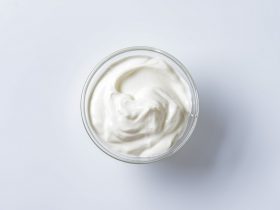Pizza is a popular convenience food that is consumed during any time of the day by almost any age group. Considered as “fast food,” pizzas have become a mainstay of modern society because of busy lifestyles and fast paced schedules.
Pizza is safe to eat during pregnancy, as long as it was thoroughly cooked (including all its ingredients and toppings) until steaming hot. The cheese used should also be made with pasteurized milk. However, pizza can be unhealthy, hence it is advised that pregnant women eat pizza in moderation.
This article will talk about pizza and how it can actually have harmful effects when ingested during pregnancy. Then, it will show recommendations on how it can be kept safe for pregnant women to eat. Some tips for pizza consumption during pregnancy will also be given.
Is Pizza Safe to Eat During Pregnancy?
Pizza, by itself, is safe for pregnant women to eat. There is no problem with a yeast-dough pizza base topped with tomato sauce and some herbs. However, some toppings used in pizzas can cause illnesses that may be harmful during pregnancy.
Listeria Monocytogenes
Listeria monocytogenes is a pathogen that causes the severe food borne infection called listeriosis (Heiman et al., 2016). Listeriosis is a potentially life-threatening infection that is mainly transmitted by ingestion of contaminated food (Jeffs et al., 2020). It has a high case fatality rate at 21 percent (CDC, 2013), which is the highest of any food borne pathogen in developed countries (Charlier et al., 2017).
According to the Centers for Disease Control and Prevention (CDC, 2013), majority of invasive forms of listeriosis occur in specific population groups, which includes pregnant women and newborn infants, older adults, and persons who are immunocompromised. Because of the natural immunosuppression of pregnancy, listeriosis is especially severe in pregnant women, who are approximately 18 times more likely to develop this infection compared to the general population (Mateus et al., 2013).
In pregnant women, listeriosis commonly manifests as a nonspecific febrile illness. However, it can also result in fetal loss, premature labor (Heiman et al., 2016), and neonatal morbidity in the form of sepsis and meningitis (Mateus et al., 2013). Neonatal listeriosis happens through vertical transmission of L. monocytogenes from mother to fetus, either by inhalation of infected amniotic fluid, via the placenta from maternal circulation, or by ascending colonization during the birth process (Jeffs et al., 2020).
A prospective cohort study done by Charlier et al. in 2017 found that transmission of listeriosis infection from the mother to the fetus occurred in 96 percent of cases. In addition, among more than 100 pregnant women who had listeriosis, only 5 percent had uneventful outcomes, while 24 percent experienced fetal loss.
Cheese in Pizza
Mozzarella is a soft, white, unripened cheese that may be consumed right after production. It is the most popularly used and key ingredient in making pizzas due to its specific melting and stretching characteristics (Ah & Tagalpallewar, 2017). If it was made from pasteurized milk (like almost all commercially-produced brands), then it is considered safe for pregnant women to eat.
Be cautious, though, about other cheeses that could be used for pizzas. These include soft, mold-ripened cheeses, such as brie and camembert, and soft blue veined cheeses, such as Danish blue. These kinds of cheese can contain Listeria and cause listeriosis in pregnant women.
Learn More: Can You Eat Blue Cheese While Pregnant?
Soft cheeses are significant vehicles for transmission of Listeria (CDC, 2013). Cows, sheep and goats can shed L. monocytogenes in their milk during lactation. Likewise, fecal contamination with Listeria can occur during milking. Hence, unpasteurized or raw milk that is used for the production of soft cheeses can become contaminated even before cheese-making (Heiman et al., 2016).
Learn More: Can You Eat Parmesan Cheese While Pregnant?
Moreover, soft cheeses have higher amounts of moisture, compared to hard cheeses, which favors the growth of L. monocytogenes. Other properties like pH and salt concentration, as well as factors during processing, are also important factors for growth of this bacterium (Heiman et al., 2016).
Both the U.S. Food and Drug Administration (FDA) and Health Canada estimate that the risk of developing listeriosis per each serving of soft ripened cheese is about 50 to 160 times higher when it is made with unpasteurized milk, compared to those made with pasteurized milk (Heiman et al., 2016).
However, even when the milk used is pasteurized, environmental contamination with L. monocytogenes can still happen during and after the process of cheese making, especially with poor sanitation in the production facilities (Choi et al., 2014). A retail survey of soft cheeses, including Latin-style, blue veined and mold ripened, from the US done in 2000 to 2001 detected L. monocytogenes in 1.3 percent of cheeses made with unlabeled or unpasteurized milk and 0.5 percent of cheeses made with pasteurized milk (Jackson et al., 2018).
Pizza Toppings

Deli Meat
Deli meat or cured, uncooked meats that are used as pizza toppings may include pepperoni, prosciutto, ham, sausage, chorizo, and salami. Pregnant women should be cautious with these as they may also harbor the bacterium L. monocytogenes.
Learn More: Can You Eat Deli Meat During Pregnancy?
The Agricultural Research Council of South Africa determined the occurrence of L. monocytogenes in their meat products from 2014 to 2016. The highest proportion of contamination was reported in processed meat (19.5%), followed by ready to eat (RTE) meat products (13.5%), and raw meat (10.1%).
Meanwhile, in Estonia, a survey conducted over 10 years from 2008 to 2010 revealed that L. monocytogenes was prevalent in 18.7 percent of raw meat products and 2 percent of RTE meat products (Matle et al., 2020).
Shellfish
Shellfish can harbor the bacterium Salmonella, and outbreaks of Salmonella typhi infection have been associated with shellfish contamination. Raw or inadequately cooked shellfish have also caused outbreaks of Norovirus gastroenteritis and Hepatitis A infection (Iwamoto et al., 2010).
Vibrio parahaemolyticus is another food borne bacterium that can cause illness in humans. Implicated sources of transmission include raw or undercooked crabs, prawns, scallops, oysters and clams. Symptoms of an infection are commonly self-limiting and last only 2 to 3 days, but severe cases may result in dysentery, septicemia, or cholera-like illness that may possibly lead to death (Bintsis, 2017).
Fruits and Vegetables
Even fruits and vegetables that are sprinkled raw on top of pizzas may harbor harmful bacteria. Escherichia coli O157:H7, Salmonella, and L. monocytogenes are the most common food borne pathogens that are present on the surface of cut fruits and vegetables, and can cause serious harm on human health (Agriopoulou et al., 2020).
In 2020, the EFSA panel on Biological Hazards (BIOHAZ) indicated that a multi-country outbreak of L. monocytogenes that took place in the European Union (EU) between 2015 and 2018 was linked to consumption of contaminated blanched frozen vegetables. Other bacteria, such as Aeromonas hydrophila, Bacillus cereus, Clostridium, Shigella, Vibrio cholerae, Campylobacter, and Yersinia enterocolitica, have also been linked to illness outbreaks after consumption of fresh and minimally processed fruits and vegetables (Olaimat & Holley, 2012).
High Calories in Pizza
The primary reason why eating pizza is not encouraged during pregnancy is due to the empty calories that it contains. Likewise, the fatty acid composition of pizzas was found to be highly in the form of saturated fat (Drzewicka et al., 2012).
In adolescents, pizza consumption was shown by Powell et al. (2015) to be significantly associated with an increased daily total energy intake (TEI) at 230 kcal, coupled with higher intakes of saturated fat (5 grams) and sodium (484 milligrams).
In 2020, Liu et al. reported that from 2003 to 2016, American adults consumed about 21 percent of their energy (or 1 in 5 calories) from full-service and fast-food restaurants, with meals that are often of low quality like pizzas. Onufrak et al. in 2019 revealed that almost a quarter (23.4%) of working adults obtain their calories from foods that are typically high in saturated fat, added sugars, or sodium, such as pizza.
Poor diet leads to various nutrition-related diseases like type 2 diabetes, hypertension and obesity (Powell et al., 2015). Pizzas are not a particularly healthy type of food, so it should be consumed only in moderation.
How to Make Pizza Safe for Consumption
Potential harmful bacteria that may be present in the ingredients used for pizzas can be killed by proper heating. Therefore, pizzas can be made safe by thorough cooking until it becomes steaming hot.
Similarly, according to the NHS, deli meats like pepperoni, parma ham and salami are safe for pregnant women to eat, as long as they were properly cooked to eliminate the risk of an infection with Listeria. Other toppings, such as shellfish (prawns, mussels, scallops), can also be made safe when properly cooked, rather than just warmed. According to the US FDA, thorough cooking of shellfish is an effective measure of reducing risk of food borne illnesses.
Pregnant women should avoid any pizza that has toppings that were sprinkled raw over the pizza prior to serving, instead of being cooked in the oven with the rest of the ingredients. These include raw prosciutto or ham, raw fruits and vegetables, and raw shellfish.
Pregnant women are also advised to eat pizzas once fully cooked, as bacteria can multiply quickly once the temperature of the pizza begins to cool down.
Better Ways to Consume Pizza During Pregnancy
Opt for Homemade Pizza
Make your own pizza at home and ensure the safety of the ingredients used, as well as proper hygiene during its preparation.
Choose a Whole Wheat Base
Whole wheat flour is made from whole grains that contain fiber and vitamins, which are absent in refined flour as the refining process removes these nutrients (P & Joye, 2020).
Be Careful with Your Choice of Toppings
Choose your toppings wisely (go for vegetables over meat or cheese) and make sure that each are thoroughly washed and cooked.
Use Less Cheese
This will lessen the calories and sodium in your pizza.
Eat a Slice Rather than a Whole Pizza
You can satisfy your craving with one slice of pizza paired with salad instead.
Discuss Your Diet with Your Health Care Team
A dietitian can guide you best about your specific recommended calorie intake based on your pre-pregnancy weight and body mass index (BMI). Pregnant mothers with comorbid conditions like gestational diabetes should discuss with their doctors the safety of consuming foods that are high in carbohydrates, sodium and fat.
Final Thoughts
Pizzas are a popular, convenient and delicious type of food, that are, unfortunately, also high in carbohydrates, salt and fat, and may contain harmful bacteria through the ingredients used. Although pizzas can be made safe for consumption by thorough cooking, pregnant women should only eat them in moderation.
If you or your loved one is pregnant and are having concerns whether or not they can eat pizza, go ahead and talk to your gynecologist or dietitian. They will be the best source of individualized advice specific for a pregnant woman’s needs.
References
https://www.babycentre.co.uk/x568576/is-it-safe-to-eat-pizza-during-pregnancyhttps://www.sitarambhartia.org/blog/maternity/can-pregnant-women-eat-pizza/https://www.fda.gov/food/buy-store-serve-safe-food/selecting-and-serving-fresh-and-frozen-seafood-safelyAgriopoulou, S., Stamatelopoulou, E., Sachadyn-Krόl, M., & Varzakas, T. (2020). Lactic acid bacteria as antibacterial agents to extend the shelf life of fresh and minimally processed fruits and vegetables: Quality and safety aspects. Microorganisms 8(6), 952. doi: 10.3390/microorganisms8060952Ah, J., & Tagalpallewar, G. (2017). Functional properties of Mozzarella cheese for its end use application. Journal of Food Science and Technology 54(12), 3766-3778. doi: 10.1007/s13197-017-2886-zBintsis, T. (2017). Foodborne pathogens. AIMS Microbiology 3(3), 529-563. doi: 10.3934/microbiol.2017.3.529Centers for Disease Control and Prevention (CDC). (2013). Vital signs: Listeria illnesses, deaths, and outbreaks: United States, 2009-2011. MMWR: Morbidity and Mortality Weekly Report 62(22), 448-452. https://www.ncbi.nlm.nih.gov/pmc/articles/PMC4604984/Charlier, C., Perrodeau, É., Leclercq, A., Cazenave, B., Pilmis, B., Henry, B., …, & MONALISA Study Group. (2017). Clinical features and prognostic factors of listeriosis: The MONALISA national prospective cohort study. The Lancet: Infectious Diseases 17(5), 510-519. doi: 10.1016/S1473-3099(16)30521-7Choi, M., Jackson, K., Medus, C., Beal, J., Rigdon, C., Cloyd, T., …, & Centers for Disease Control and Prevention (CDC). (2014). Notes from the field: Multistate outbreak of listeriosis linked to soft-ripened cheese: United States, 2013. MMWR: Morbidity and Mortality Weekly Report 63(13), 294-295. https://www.ncbi.nlm.nih.gov/pmc/articles/PMC5779354/Drzewicka, M., Grajeta, H., & Kleczkowski, J. (2012). [The fat content and fatty acids composition in selected products of the convenience food]. Roczniki Państwowego Zakładu Higieny 63(2), 199-205. PMID: 22928368EFSA Panel on Biological Hazards (BIOHAZ), Koutsoumanis, K., Alvarez-Ordόñez, A., Bolton, D., Bover-Cid, S., Chemaly, M., …, & Allende, A. (2020). The public health risk posed by Listeria monocytogenes in frozen fruit and vegetables including herbs, blanched during processing. EFSA Journal 18(4), e06092. doi: 10.2903/j.efsa.2020.6092Heiman, K. E., Garalde, V., B., Gronostaj, M., Jackson, K. A., Beam, S., Joseph, L., …, & Silk, B. J. (2016). Multistate outbreak of listeriosis caused by imported cheese and evidence of cross-contamination of other cheeses, USA, 2012. Epidemiology and Infection 144(13), 2698-2708. doi: 10.1017/S095026881500117XIwamoto, M., Ayers, T., Mahon, B., & Swerdlow, D. (2010). Epidemiology of seafood-associated infections in the United States. Clinical Microbiology Reviews 23(2), 399-411. doi: 10.1128/CMR.00059-09Jackson, K., Gould, L. H., Hunter, J., Kucerova, Z., & Jackson, B. (2018). Listeriosis outbreaks associated with soft cheeses, United States, 1998-2014. Emerging Infectious Diseases 24(6), 1116-1118. doi: 10.3201/eid2406.171051Jeffs, E., Williman, J., Brunton, C., Gullam, J., & Walls, T. (2020). The epidemiology of listeriosis in pregnant women and children in New Zealand from 1997 to 2016: An observational study. BMC Public Health 20, 116. doi: 10.1186/s12889-020-8221-zLiu, J., Rehm, C., Micha, R., & Mozaffarian, D. (2020). Quality of meals consumed by US adults at full-service and fast-food restaurants, 2003-2016: Persistent low quality and widening disparities. The Journal of Nutrition 150(4), 873-883. doi: 10.1093/jn/nxz299Mateus, T., Silva, J., Maia, R., & Teixeira, P. (2013). Listeriosis during pregnancy: A public health concern. ISRN Obstetrics and Gynecology 2013, 851712. doi: 10.1155/2013/851712Matle, I., Mbatha, K., & Madoroba, E. (2020). A review of Listeria monocytogenes from meat and meat products: Epidemiology, virulence factors, antimicrobial resistance and diagnosis. Onderstepoort Journal of Veterinary Research 87(1), 1869. doi: 10.4102/ojvr.v87i1.1869Olaimat, A., & Holley, R. (2012). Factors influencing the microbial safety of fresh produce: A review. Food Microbiology 32(1), 1-19. doi: 10.1016/j.fm.2012.04.016Onufrak, S., Zaganjor, H., Pan, L., Lee-Kwan, S. H., Park, S., & Harris, D. (2019). Foods and beverages obtained at worksites in the United States. Journal of the Academy of Nutrition and Dietetics 119(6), 999-1008. doi: 10.1016/j.jand.2018.11.011P, N. P., & Joye, I. (2020). Dietary fibre from whole grains and their benefits on metabolic health. Nutrients 12(10), 3045. doi: 10.3390/nu12103045Powell, L., Nguyen, B., & Dietz, W. (2015). Energy and nutrient intake from pizza in the United States. Pediatrics 135(2), 322-330. doi: 10.1542/peds.2014-1844




